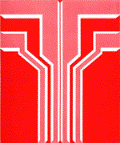Nebraska Academy of Sciences

Transactions of the Nebraska Academy of Sciences and Affiliated Societies
Date of this Version
1973
Document Type
Article
Citation
Published in Transactions of the Nebraska Academy of Sciences, Volume 2 (1973).
Abstract
The primary objectives of this study were: (1) to provide quantitative descriptions of the chromosomes of the domestic swine (Sus scrota: 2n=38), the European wild swine (2n=36) and the domestic-European wild hybrid (2n=37); and (2) to define chromosomal differences between the three karyotypes.
The diploid (2n) chromosome number of the domestic swine has been shown to be 38 (Ruddle, 1961; Makina et al., 1962; McConnell et al., 1963). The European wild swine of the Tellico Wildlife Management Area of Tennessee has been shown to have a diploid chromosome number of 36 (Rary et al., 1968). European wild swine with 36 chromosomes crossed with 38 chromosome domestic swine have produced fertile 37 chromosome offspring (UT-AEC, 1967 unpublished data).
McConnell et at., (1963) and Ruddle (1965) have quantitatively analyzed the somatic chromosomes from a small number of cells of the domestic swine (2n=38). McConnell utilized chromosome measurements taken from a total of 21 cells, 13 female and 8 male, from the second passage of pig kidney tissue cultures.
Establishment of a "definition" of a karyotype of a particular species provides a normal or control for such studies as quantitative analysis of chromosome breakage by ionizing radiations and other cytogenetic studies which would directly involve chromosome morphology. Establishment of a "definition" of human karyotype, for example, has proved to be of great value in analysis of many "diseases" and abnormalities that are directly related to chromosome abnormalities (Chu, 1964; Hall, 1964).


Comments
Copyright 1973 by the author(s).